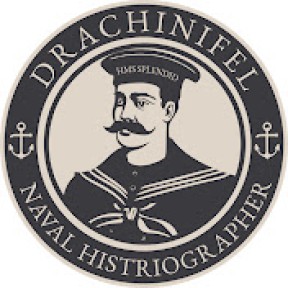The Battle of Jutland | Part 1 - Beatty vs Hipper (1916)
Today we look at the Battle of Jutland, from the start of the shooting to the end of the battlecruiser action.
The Battle of Jutland or the Battle of Skagerrak, was a naval battle fought between Britain's Royal Navy Grand Fleet, under Admiral Sir John Jellicoe, and the Imperial German Navy's High Seas Fleet, under Vice-Admiral Reinhard Scheer, during the First World War.
The battle unfolded in extensive manoeuvring and three main engagements (the battlecruiser action, the fleet action and the night action), from 31 May to 1 June 1916, off the North Sea coast of Denmark's Jutland Peninsula.
It was the largest naval battle and the only full-scale clash of battleships in that war. Jutland was the third fleet action between steel battleships, following the Battle of the Yellow Sea in 1904 and the decisive Battle of Tsushima in 1905, during the Russo-Japanese War. Jutland was the last major battle in world history fought primarily by battleships. In terms of total ships displaced, it was the largest surface naval battle in history.
Germany's High Seas Fleet intended to lure out, trap, and destroy a portion of the Grand Fleet, as the German naval force was insufficient to openly engage the entire British fleet. This formed part of a larger strategy to break the British blockade of Germany and to allow German naval vessels access to the Atlantic. Meanwhile, Great Britain's Royal Navy pursued a strategy of engaging and destroying the High Seas Fleet, thereby keeping German naval forces contained and away from Britain and her shipping lanes.
The Germans planned to use Vice-Admiral Franz Hipper's fast scouting group of five modern battlecruisers to lure Vice-Admiral Sir David Beatty's battlecruiser squadrons into the path of the main German fleet. They stationed submarines in advance across the likely routes of the British ships.
However, the British learned from signal intercepts that a major fleet operation was likely, so on 30 May Jellicoe sailed with the Grand Fleet to rendezvous with Beatty, passing over the locations of the German submarine picket lines while they were unprepared. The German plan had been delayed, causing further problems for their submarines, which had reached the limit of their endurance at sea.
On the afternoon of 31 May, Beatty encountered Hipper's battlecruiser force long before the Germans had expected. In a running battle, Hipper successfully drew the British vanguard into the path of the High Seas Fleet. By the time Beatty sighted the larger force and turned back towards the British main fleet, he had lost two battlecruisers from a force of six battlecruisers and four powerful battleships, though he had sped ahead of his battleships of 5th Battle Squadron earlier in the day, effectively losing them as an integral component for much of this opening action against the five ships commanded by Hipper.
Beatty's withdrawal at the sight of the High Seas Fleet, which the British had not known were in the open sea, would reverse the course of the battle by drawing the German fleet in pursuit towards the British Grand Fleet. Between 18:30, when the sun was lowering on the western horizon, back-lighting the German forces, and nightfall at about 20:30, the two fleets, totalling 250 ships between them, directly engaged twice.
Fourteen British and eleven German ships sank, with a total of 9,823 casualties. After sunset, and throughout the night, Jellicoe manoeuvred to cut the Germans off from their base, hoping to continue the battle the next morning, but under the cover of darkness Scheer broke through the British light forces forming the rearguard of the Grand Fleet and returned to port.
Both sides claimed victory. The British lost more ships and twice as many sailors but succeeded in containing the German fleet. The British press criticised the Grand Fleet's failure to force a decisive outcome, while Scheer's plan of destroying a substantial portion of the British fleet also failed. The British strategy of denying Germany access to both the United Kingdom and the Atlantic did succeed, which was the British long-term goal.
The Germans' "fleet in being" continued to pose a threat, requiring the British to keep their battleships concentrated in the North Sea, but the battle reinforced the German policy of avoiding all fleet-to-fleet contact. At the end of 1916, after further unsuccessful attempts to reduce the Royal Navy's numerical advantage, the German Navy accepted that its surface ships had been successfully contained, subsequently turning its efforts and resources to unrestricted submarine warfare and the destruction of Allied and neutral shipping, which, along with the Zimmermann Telegram, by April 1917 triggered the United States of America's declaration of war on Germany.
Subsequent reviews commissioned by the Royal Navy generated strong disagreement between supporters of Jellicoe and Beatty concerning the two admirals' performance in the battle. Debate over their performance and the significance of the battle continues to this day.















































